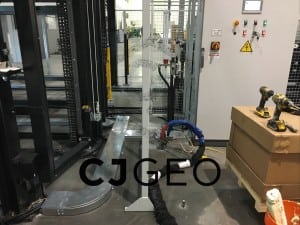Concrete Floor Repair Projects
-

9″ Floor Lift
THE JOB 9″ floor lift for 6,000 square feet of slab floor in a flex space building in Bosto...
-

Warehouse Floor Lifting
THE JOB 25,000 square feet of the industrial floor at a military facility settled up to 4 inches ...
-

Grain Bin Floor Repair
THE JOB The floor of a 105′ diameter grain bin settled. The floor had a bin sweep installed, that...
-

Industrial Facility Floor Repair
THE JOB The slab floor inside of a manufacturing facility in Hagerstown, Maryland settled. This c...
-

Warehouse Floor Water Intrusion Repair
The Job This warehouse floor water intrusion repair project is located in Columbua, South Carolin...
-

Commercial Floor Void Fill
THE JOB This commercial floor void fill project is located in Manhattan. During a Local Law 11 in...
-

Port Shed Floor Stabilization
THE JOB This port shed floor stabilization project is located in Baltimore, Maryland. The 11″ thi...
-

Office Floor Settlement Repair
The Job This office floor settlement repair project is located near Norfolk, Virginia. The slab f...
-

Tunnel Abandonment – Boston
THE JOB A plumbing contractor hand tunneled 140LF of 4’x5′ tunnel under two apartment buildings n...
-

School Floor Leveling
The Job This school floor leveling project is located in Princeton, West Virginia. The Princeton ...
-

Sewer Collapse Sinkhole Repair
The Job This sewer collapse sinkhole repair project is located in central Virginia. When the oper...
-

Corporate HQ Stabilization
The Job Starting immediately after construction was completed, the slab on the grade floor within...
-

Fire Station Floor Lifting
The Job This fire station floor lifting project is located about an hour east of Richmond, Virgin...
-

Dollar Store Floor Void Filling
The Job This floor void filling project is located about three hours west of Richmond, Virginia. ...
-

Warehouse Floor Joint Stabilization
The Job This floor joint stabilization project is located in Ashland, Virginia. About two months ...
-

Norfolk polyurethane grouting
The Job This Norfolk polyurethane grouting project is located on a military base. The medical cli...
-

New Jersey polyurethane grouting
The Job This New Jersey polyurethane grouting project is located in Creskill, New Jersey. As part...
-

Apartment Floor Lifting
The Job This apartment floor lifting project is on a military facility in Washington, DC. During ...
-

Virginia Polyurethane Grouting
The Job This Virginia polyurethane grouting project is located in Blacksburg, Virginia, at Virgin...
-

Michigan Polyurethane Grouting
The Job This Michigan polyurethane grouting project is located near Saginaw, Michigan. The work w...
-

Yonkers Polyurethane Grouting
The Job This Yonkers polyurethane grouting project is located in Yonkers, New York. The project i...
-

Fairfax Polyurethane Grouting
The Job This Fairfax polyurethane grouting project is located at a commercial building used for m...